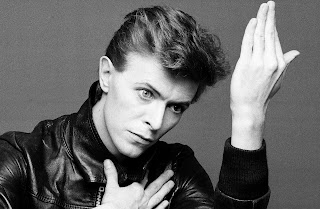Anthony D. Smith (1939-2016) is a culturist hero. Alongside, Samuel P. Huntington (1927 – 2008), Smith inspired me as I
wrote ‘Culturism,’ in 2006. Many
will recognize Harvard’s Huntington for his having created the ‘Clash of
Civilizations’ model. But, though
he taught at the London School of Economics, very few know about or appreciate
Smith’s ‘ethno-symbolism’ model of nationalism.
Leftist controlled academia sees the nation as an,
‘imagined,’ ‘construct,’ that was invented by the West in the 18th
century and subsequently exported to the rest of the world. This view, (not
incidentally), portrays nations, (like masculinity, literature, race – and all
else the left discusses), as illegitimate and oppressive.
Smith, by contrast argued that nationalism’s power comes
from the myths, memories, traditions and symbols of their ethnic heritages. The
characteristics of ethnic communities, by his definition were:
1. An
identifying name or emblem.
2. A
myth of common ancestry.
3. Shared
historical memories and traditions.
4. One
or more elements of common culture.
5. A
link with an historic territory or ‘homeland.’
6. A
measure of solidarity, at least among the elites.
Among symbolic building blocks of nationalism, Smith
includes songs, images, literature, art, history, monuments, buildings, tomb
styles, myths, belief in a golden age, religion, states, films, the dead,
heroes and the virtues they inspire, feeling chosen, language, redemptive hopes,
coercion, clothes,
traditions, habits, laws and institutions. [i]
While mainstream historians reasoned, if all this is needed
to sustain nationalism, it must be false; Smith reasoned that if all this was
needed to sustain nationalism, we had better get to it! He wrote that, as nations were
universal, essential and a source of identity, maintaining them gives
historians, artists, archeologists, linguists, philosophers and others a
culturist mission – reify the nation!
Smith helped invent the distinction between ‘ethnic’ and
‘civic’ nationalism.[ii] Interestingly, he noted that Western
European nations developed towards civic nationalism in rebellion against
absolute monarchs; Whereas Eastern Europeans veered towards ethnic nationalism to
challenge empires. And, whereas he
acknowledged that ethnic nationalism could create refugees, he also
acknowledged that it was the firmest basis for a nation.
Of potential interest to alt-right readers, Smith considered biological ethnic purity a myth based on his reading of ancient migration, endogamy patterns and cultural openness. He looked at how the British, for example, looked Roman predecessors in the 16th century, to British, Saxon and Danish ancestors in 1685, and Germanic roots under Burke.[iii] For Smith, ethnicity was the subjective belief that those in the nation were part of a continuous ethnic group. But, DNA based or not, that the French, for example, think of themselves as a people, is the main basis of their ethno-state.
But, Smith's main achievement was to stand up to an entire academic myth! He said, nations are not just 'imagined' products of modern nationalist projects, designed to centralize an economy. No! The French culture pulls on real and long-lasting myths. If modern nation builders said, the French culture is rooted in Confucian belly dancing, it wouldn't have flown. They built on pre-existing, long memories of Charlemagne, Roman, Greek and Christian heritage. The French ethno-state is real and merits veneration.
Of potential interest to alt-right readers, Smith considered biological ethnic purity a myth based on his reading of ancient migration, endogamy patterns and cultural openness. He looked at how the British, for example, looked Roman predecessors in the 16th century, to British, Saxon and Danish ancestors in 1685, and Germanic roots under Burke.[iii] For Smith, ethnicity was the subjective belief that those in the nation were part of a continuous ethnic group. But, DNA based or not, that the French, for example, think of themselves as a people, is the main basis of their ethno-state.
But, Smith's main achievement was to stand up to an entire academic myth! He said, nations are not just 'imagined' products of modern nationalist projects, designed to centralize an economy. No! The French culture pulls on real and long-lasting myths. If modern nation builders said, the French culture is rooted in Confucian belly dancing, it wouldn't have flown. They built on pre-existing, long memories of Charlemagne, Roman, Greek and Christian heritage. The French ethno-state is real and merits veneration.
Smith denounced global culture an oxymoron. And, as a nationalist, he questioned
the viability of ‘European culture’ as a basis for solvency. His questions
about the DNA and subjective nature of ethnos are still cutting-edge. But, going beyond questions, Smith
called for culturism in arts and academia. And, by championing ‘ethno-symbolism’ – in the heart of
academia – he led by example. Anthony
D. Smith is an inspiring culturist hero.

